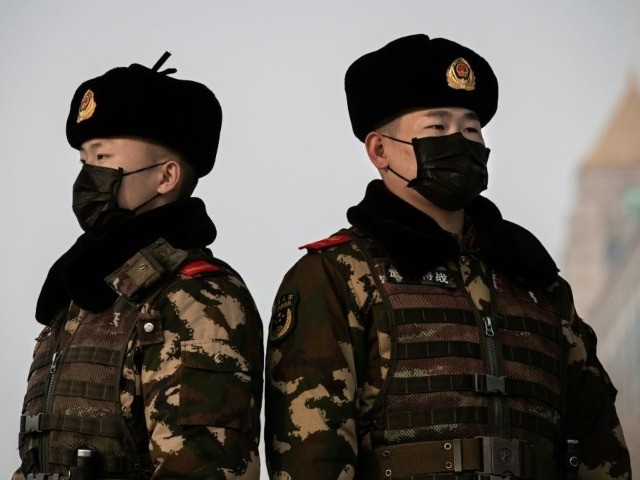Chinese authorities have failed to contain new coronavirus outbreaks in Beijing and Heilongjiang – China’s northernmost province bordering Russia – prompting the government to enact draconian quarantine measures in recent weeks in a desperate scramble to control the virus’s spread, the Epoch Times reported on Monday.
In Harbin, capital of Heilongjiang, authorities are reportedly sealing residents inside of their homes in a forced quarantine. In Suifenhe, a Chinese town bordering Russia, residents say the government is offering 3,000 yuan [$420] in cash bounties for people who “capture” and turn in illicit migrants crossing over from Russia, who China blames for “imported cases,” according to a report by Shanghai’s Sixth Tone, a state-owned publication, on Monday.
A local Harbin resident filmed and recently released a video in which a residential unit appears to be locked from the outside at Jincheng compound, in the city’s Acheng district. The Epoch Times republished the video.
In the video, a notice from the local government can be seen on the entrance to the compound; the notice states that residents who live at the unit are suspected of being infected with the Chinese coronavirus.
Harbin’s coronavirus outbreak has been described by local authorities as “an aggregated, explosive situation,” according to internal documents from the Heilongjiang provincial government, obtained and shared by the Epoch Times in its report Monday.
Officially, Harbin authorities have acknowledged at least 58 domestic cases, diagnosed between April 9 and April 19. Several cluster outbreaks emerged at two local hospitals – Harbin Medical University (HMU) First Affiliated Hospital and Harbin No. 2 Hospital – and at residential compounds, according to the Epoch Times.
Elsewhere in Heilongjiang, the town of Suifenhe enforced a lockdown, officially closing its land border with Russia on April 6 after authorities claimed Chinese nationals returning from Russia in recent weeks caused a spike in coronavirus cases in the area.
According to Chinese state media, the infections in Heilongjiang have already spread to neighboring regions, such as North China’s Inner Mongolia Autonomous Region, and Liaoning Province.
“The situation highlights the significance of ensuring close management of the epidemic and cutting off community transmission of the virus,” China’s National Health Commission spokesman Mi Feng told Chinese state newspaper China Daily on Sunday.
In Beijing, the city’s Chaoyang district was officially designated a “high-risk region” for coronavirus on April 20, making it the first region outside of Hubei province – the epicenter of China’s coronavirus outbreak – publicly acknowledged as such by Chinese authorities.
“A region with more than 50 infections and a cluster outbreak within 14 days will be counted as a high-risk region,” Pang Xinghuo, deputy director of Beijing Municipal Health Commission (BMHC), announced at a press conference on Monday, as reported by Chinese-state media.
Despite Chaoyang’s heightened designation, as of Monday, BMHC had only announced three domestic infections for the entire capital of Beijing.
On Monday, state-run newspaper Beijing News reported that residents of Chaoyang district will be forced to spend two weeks in a government quarantine facility before being allowed to travel to other areas in nearby Hebei province.
“It doesn’t matter whether the person is working or living in Chaoyang district. Before he or she enters our residential compound, he or she has to stay at a quarantine center for 14 days. The cost is 175 yuan [$25] per day, and must be paid by the person,” a government staff member in Shijiazhuang city, Hebei province said.
The Beijing News report added that government staff in Tianjin, Langfang, and other Hebei province cities were enforcing similar quarantines for visitors from Chaoyang.
White House
COMMENTS
Please let us know if you're having issues with commenting.